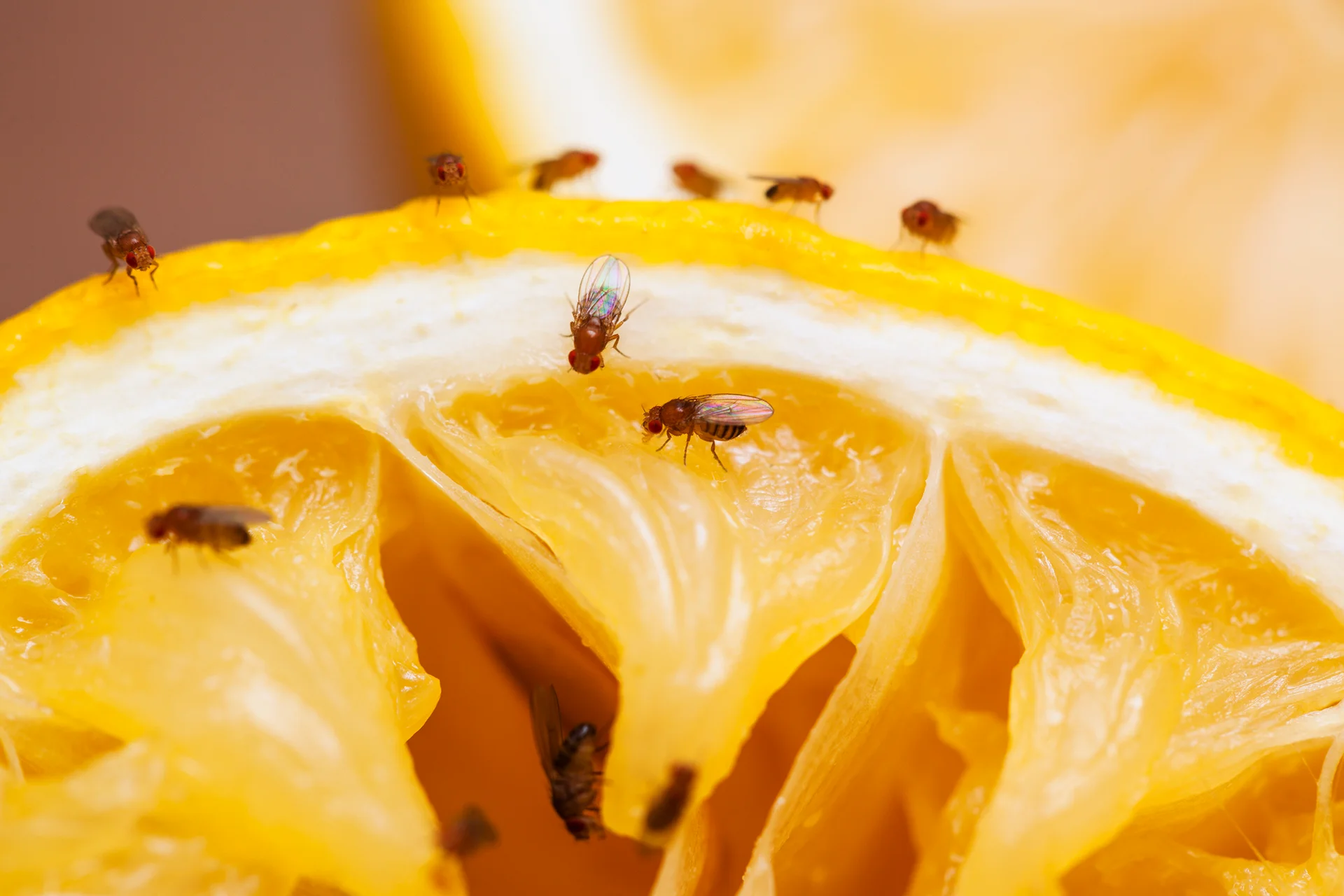Fruit flies may hold the key to understanding and treating a debilitating disorder in humans. Recent advances in genetic engineering have allowed scientists to give fruit flies the ability to produce a human protein linked to histamine intolerance. This innovative technique, known as “heterologous expression“, offers an exciting new model to study this problematic enzyme.
In this easy-to-understand guide, learn how the human gene for kidney diamine oxidase (hDAO) and fruit fly DNA could revolutionize research on histamine intolerance and lead to new treatments. With a few simple tweaks to their genes, these tiny insects may provide big insights into conquering this challenging condition.
Diamine Oxidase – An Overview
Diamine oxidase (DAO) is an essential enzyme produced by the body to metabolize histamine from the food we eat. Histamine is a chemical involved in immune responses, stomach acid production, and brain signaling. But when histamine builds up in the gut, it can trigger unpleasant symptoms like headaches, hives, and nausea – a condition known as histamine intolerance.
This is where DAO comes in. By breaking down histamine from food, DAO helps prevent excess histamine from entering the bloodstream. When DAO activity is low, histamine degradation falters, allowing histamine to accumulate in the body and cause symptoms of intolerance.
In short, DAO acts like a gatekeeper, regulating histamine levels through metabolic breakdown. Understanding DAO’s role is key to tackling troublesome histamine buildup.
Fruit Flies: Tiny Tools for Understanding DAO
Fruit flies (drosophila melanogaster) don’t naturally produce DAO like humans. This makes them a perfect blank canvas for studying the human enzyme. By inserting the gene for human DAO into fly cells, researchers can grow large amounts of the enzyme for study. The fly cells act as tiny biofactories, churning out human DAO that can then be isolated and analyzed.
Studying DAO in fruit flies has helped reveal:
- The structure and active sites of the enzyme
- How DAO interacts with copper ions
- Inhibitors that regulate DAO activity
- Genes involved in DAO production
Diamine Oxidase and Histamine Balance
So why do we need DAO?
DAO helps convert histamine into less active compounds that are easily removed from the body. Without enough DAO activity, histamine can accumulate and cause issues.
DAO is also a copper-containing amine oxidase. It catalyzes the breakdown of diamines like putrescine and histamine. By converting histamine, DAO helps:
| Function | Description |
| Reduce allergy symptoms | Histamine drives many allergy symptoms like hives, runny nose, and itching. By degrading histamine released during allergic reactions, DAO curbs these unpleasant effects. |
| Control inflammation | As a key inflammatory signal, histamine kicks off swelling and irritation. DAO helps keep these inflammatory processes in check by scavenging excess histamine. |
| Regulate stomach acid | Histamine stimulates acid secretion in the stomach. DAO tuning of histamine prevents overproduction of gastric acids. |
| Prevent toxicity from diamines | DAO breaks down diamines like putrescine and histamine itself. This catabolic action protects against toxic accumulation of these compounds. |
Lower DAO levels or blocked activity can lead to histamine intolerance. Supplementing DAO enzymes may help restore balance.
Peeking Inside DAO: Its Molecular Structure
Studying DAO’s molecular structure provides clues to how it works. X-ray crystal structures show DAO contains:
- An active-site channel where histamine breakdown occurs
- Copper ion cofactors needed for enzyme activity
- An aspartic acid residue important for catalysis
- Sites where inhibitors can bind and regulate DAO
The structure produced in fruit fly cells resembles native human DAO. Subtle differences may affect enzyme activity and inhibitor binding.
Copper Ions: Essential for DAO Function
DAO needs copper to work properly. DAO belongs to a family of enzymes called copper-containing amine oxidases (CAOs). These enzymes use copper atoms, or copper ions, to help carry out their chemical reactions.
Inside DAO, the copper ions switch back and forth between two different forms – Cu(I) and Cu(II) – while interacting with molecules like histamine. The copper ions sit within special ‘active sites’ in the structure of the DAO enzyme.
Researchers have studied what happens when they make changes to the copper sites in DAO, through mutations or blocking chemicals. These studies show that when copper can’t bind to DAO properly, the enzyme loses its ability to break down histamine and other amines.
In simple terms, copper binding allows DAO to activate and do its job of chopping up histamine. Without copper hooked in place, DAO just can’t work its chemical magic!
Balancing Histamine Levels
DAO doesn’t work alone to break down histamine – it partners with other enzymes like histamine N-methyltransferase (HNMT). Each enzyme has a different method to deactivate histamine:
- DAO directly breaks down histamine into imidazole acetaldehyde
- HNMT converts histamine into methylhistamine
Together, these enzymes form a histamine degradation crew that keeps levels in check. When DAO activity is robust, it helps maintain nice and low histamine levels in the body.
Problems can arise when DAO is lacking. A variety of conditions can lead to high histamine with insufficient DAO, including allergies, intestinal diseases, diabetes complications, and mast cell activation disorders.
Doctors have tests to measure both DAO activity levels and histamine conversion ratios. These lab tests help diagnose histamine intolerance and identify who may benefit from DAO enzyme supplements to rebalance their histamine metabolism.
Inhibitors & Modulators of DAO
DAO activity can be influenced by inhibitors and modulators. For example, some compounds like aminoguanidine act as potent DAO inhibitors. They bind tightly to the enzyme and block substrate breakdown.
On the flip side, drugs like epinephrine have been found to enhance DAO activity. Other modulators may work by stabilizing DAO and preventing its degradation. Studying inhibitors is shedding light on how the structure relates to DAO function. It also highlights options for regulating DAO activity pharmaceutically.
The Genetics Behind DAO Production genes provide the blueprint for making DAO. The main gene is AOC1 (amine oxidase, copper containing 1). This gene codes for DAO production in tissues like the gastrointestinal tract, placenta, and kidneys.
Researchers have also identified variants in other genes tied to altered DAO levels. For example, certain polymorphisms in histamine-related genes may contribute to reduced DAO activity. Studying DAO genetics and gene expression profiles in fruit flies can help uncover mechanisms controlling enzyme production.
DAO & Health: Allergies, Intolerances and More

Altered DAO activity has been implicated in several health conditions:
- Allergies: Insufficient DAO may prolong allergic reactions.
- Diabetic complications: Reduced DAO is linked to issues like nephropathy.
- Digestive disorders: Impaired DAO can lead to gut permeability and inflammation.
Clinical trials are exploring DAO supplementation for treating histamine intolerance. Emerging research also shows links between the gut microbiome, DAO activity, and allergy outcomes.
Future research will uncover more about DAO’s health impacts. For now, maintaining adequate DAO levels through diet, lifestyle and enzymes remains key for histamine balance.
Foods to Boost Your Body’s DAO Activity
Certain foods contain key nutrients and compounds that help enhance the body’s production and activity of the DAO enzyme:
| Food Groups | Examples |
| Fruits | Apples, bananas, oranges, strawberries, blueberries, raspberries, grapes, kiwi, mango, pineapple, watermelon, peaches, pears, plums, cherries, grapefruit, apricots |
| Vegetables | Broccoli, spinach, kale, carrots, sweet potatoes, tomatoes, bell peppers, onions, garlic, mushrooms, zucchini, squash, cucumber, cauliflower, cabbage, Brussels sprouts, green beans, peas, lentils, chickpeas |
| Grains | Whole wheat bread, brown rice, quinoa, oats, barley, popcorn, whole wheat pasta, whole grain cereal |
| Protein Foods | Chicken, turkey, fish, beef, pork, eggs, tofu, tempeh, beans, lentils, chickpeas, nuts, seeds |
| Dairy | Milk, cheese, yogurt, kefir |
| Oils | Olive oil, canola oil, avocado oil |
| Fermented Foods | Kefir, kimchi, sauerkraut, miso, tempeh, kombucha |
| Herbs and Spices | Ginger, turmeric, cinnamon, cumin, coriander, parsley, basil, oregano, thyme, rosemary |
| Tea | Green tea, chamomile tea, peppermint tea |
| Nuts and Seeds | Almonds, walnuts, pecans, pumpkin seeds, sunflower seeds |
DAO Supplementation
While eating foods high in DAO-supporting nutrients is important, DAO enzyme supplements can provide additional benefits:
- Convenience: Capsule forms allow easy, on-the-go dosing of DAO without food prep.
- Optimal doses: Supplements contain concentrated amounts of DAO not achievable from diet alone.
- Rapid action: DAO supplements act quickly to break down high histamine foods.
- Targeted support: Provides DAO precisely when and where it is needed most.
- Customizability: Dosing can be adjusted based on individual responses and needs.
Conclusion
Fruit fly studies have unlocked many DAO mysteries that eluded researchers for years. Expressing human DAO in insects has illuminated everything from its 3D structure to molecular interactions.
While DAO research still has a long runway, the insights so far highlight its importance for managing histamine. For those with inadequate DAO, targeted solutions like supplemental enzymes may help regain control over histamine levels and associated symptoms.
Taking Action on DAO Deficiencies

If you suspect you may have suboptimal DAO levels, consider taking a DAO supplement to support healthy histamine metabolism. SeeBeyond Shop offers high-quality, enzyme-active DAO supplements shown to be effective through clinical research.
By supplementing with SeeBeyond Shop’s DAO-HIST, you can help promote balanced levels of histamine and other polyamines in your body. This may help manage adverse reactions to histamine-rich foods and beverages while also protecting kidney health long-term.
For those looking to proactively optimize their DAO levels or manage histamine intolerance symptoms, SeeBeyond DAO-HIST is a scientifically-validated choice. Book a free consultation with us today to learn more.
